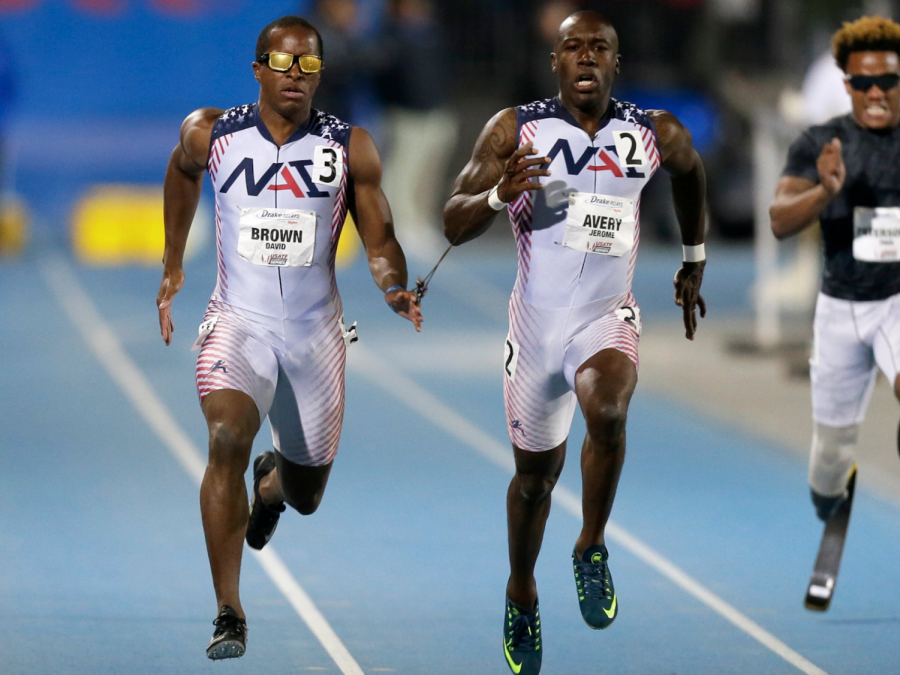Running on the same track
The P.E. curriculum includes a new Disabilities unit to educate students on the struggles of living with a disability
Visually impaired runner David Brown (left) and guide Jerome Avery compete in 2015 Paralympics. Photo courtesy of creative commons.
March 17, 2019
It’s no secret that playing sports, especially as part of the school experience, can have a lasting impact on a student’s life but what happens what you’re not allowed to play? Students with disabilities can benefit from participating in sports just as much as their peers without disabilities, but often are denied the chance to participate and face general disrespect and ignorance from the student body.
A new Physical Education unit is being taught to 9th and 10th grade students to increase disability awareness and celebrate the accomplishments of athletes of all abilities. Health and Physical Education Teachers Melissa Stile and Bridget Laszewski developed activities to introduce students to adapted sports, competitive or recreational sports for people with disabilities.
The unit will include sit volleyball, guided running, 7-a-side soccer and more. Each sport that the students participate in will have multiple activities to help improve the success of the students during actual games. For example, in guided running, a visually impaired runner runs with a guide and and eye shades to safely participate in track events. Prior to the actual event, students will first practice wearing eye shades and guiding a partner in different environments.
It should be noted that the purpose of covering this material with students is not to give them the experience of being visually impaired. Rather, the focus is to bring awareness to the struggles of those living with a disability and to explore the opportunities available to them.
“The first day of the unit there was a presentation that discussed the definition and different categories of adapted sport… and the sports that were going to be covered,” Laszewski said.
In addition, students will learn about “person first language,” which teaches students to always view an individual as a normal human being and not as a disability. This way, students learn about the importance of what they’re doing and the significance of their actions.
“People with disabilities are just like you and me; enjoy the same things as we do; like the same music. They just experience life differently than a typically developing person,”Laszewski said.






